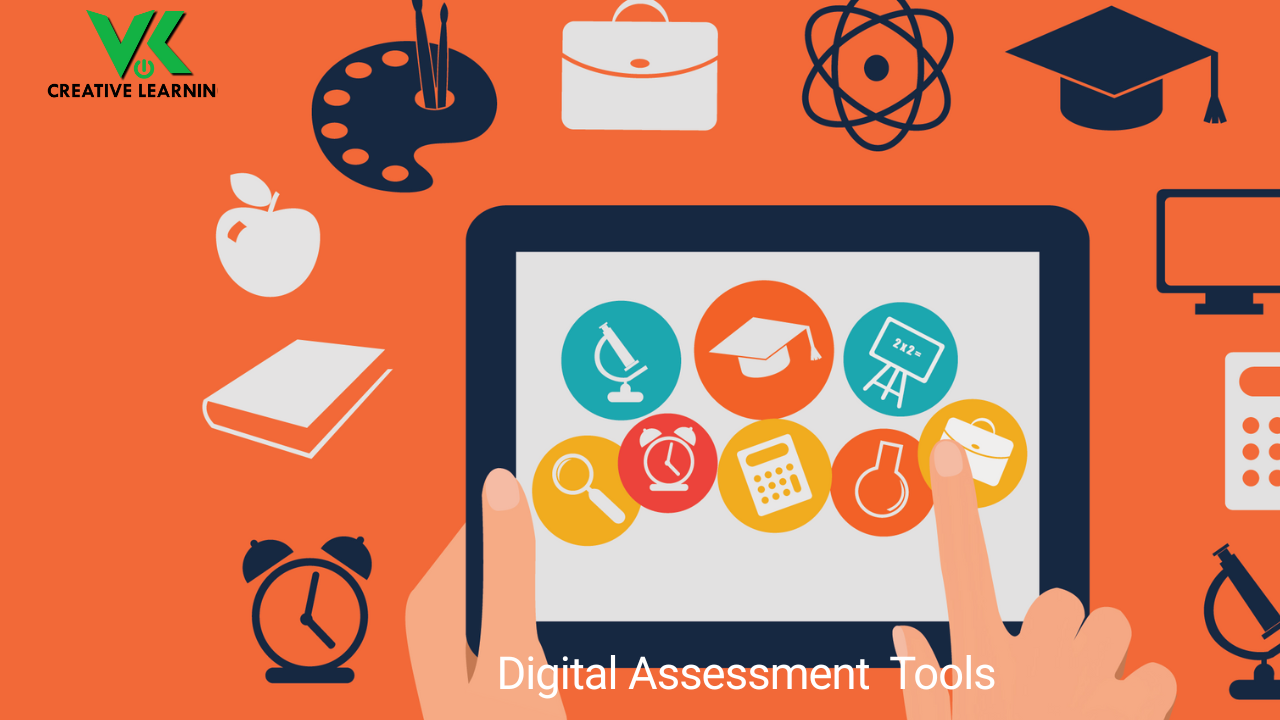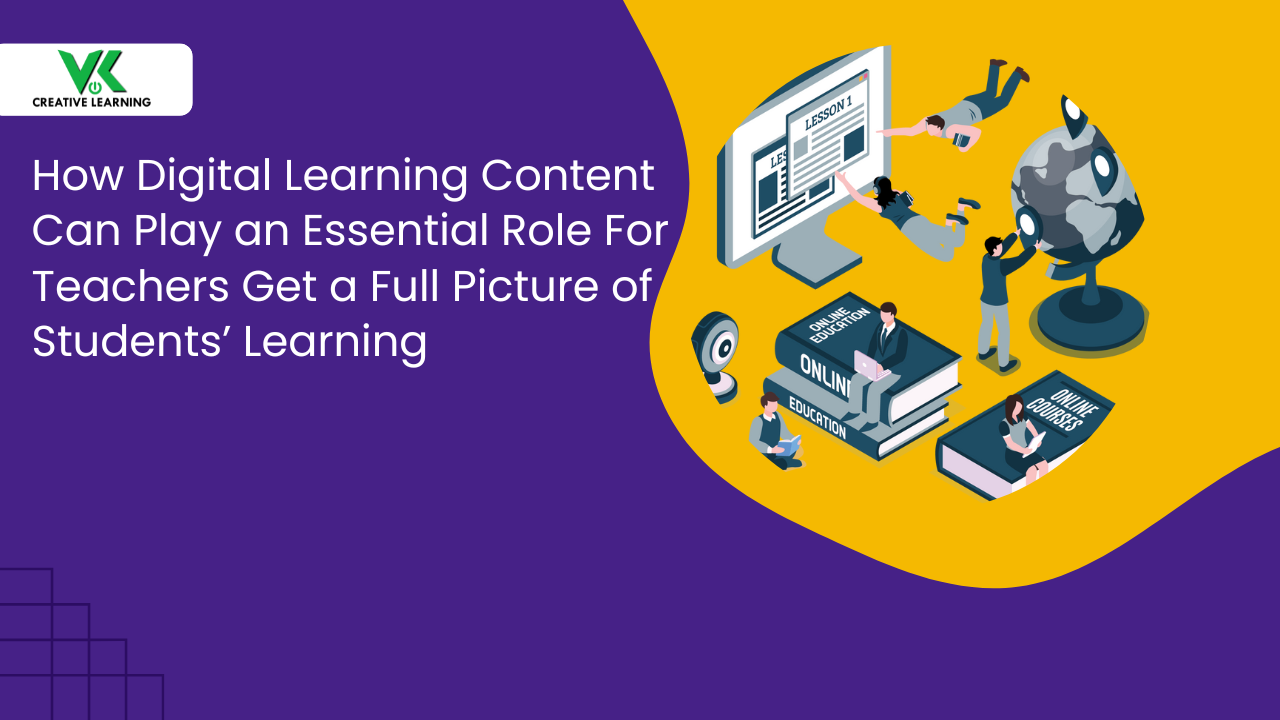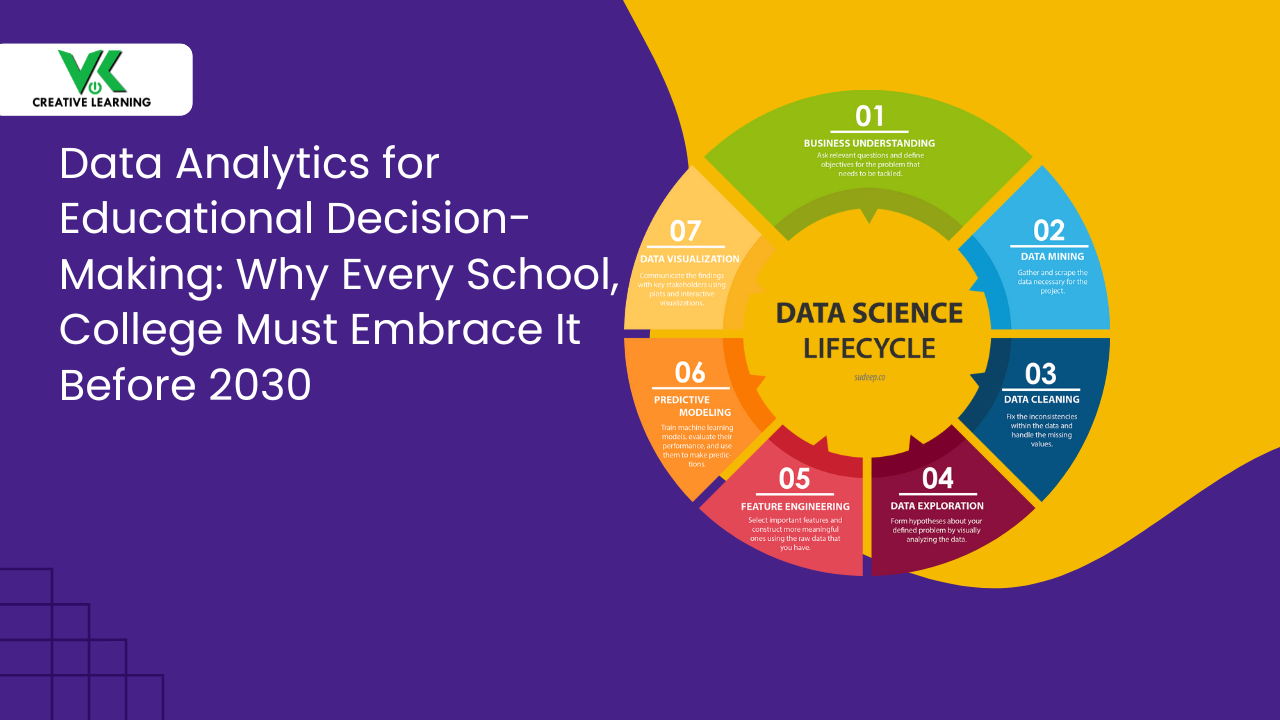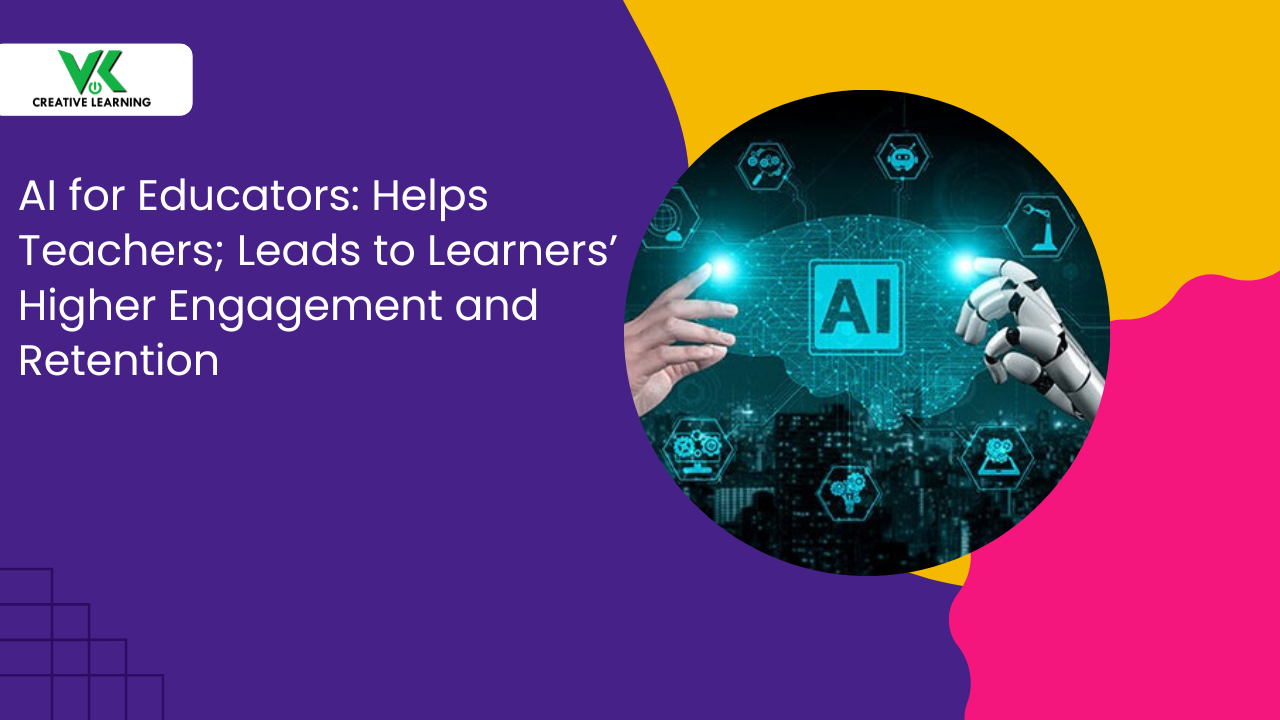Why Digital Assessment Features in E-learning can be Beneficial for Both Teachers and Students
September 18, 2025
In modern days, students favor screen-based knowledge absorption, and hence, textbook learning has decreased. So, learning has much-evolved and a big change has set in as students also prefer learning from devices.
Major benefits: students use many skill-building ways from these devices: drawing, clicking, and recording.
In other words, e-learning-based learning and teaching is gaining ground. Interestingly, even teachers can make use of this e-learning tool to understand the growth of these students in terms of learning. Additionally, teachers can understand where there is a lag in students' understanding and, accordingly, tune the content.
Thus, digital assessment tools in e-learning provide feedback-measuring metrics. Importantly, unlike paper tests, the use of assessment tools in e-learning helps to bring better results in less time. Elaborately, a teacher can quickly get a hold of the areas where children struggle is on for any subject.
For example, for subjects like mathematics, teachers can immediately understand which chapters (like fractions) are difficult for students to grasp. Based on this analysis, teachers can come out with creative ideas to teach the concepts.
Imagine a game that shows that a pizza is cut into pieces; seeing it makes fractions suddenly click--that’s instant help. Every student—whether an auditory learner (sound-based memory user) or a visual learner (picture-friendly thinker) can immediately benefit.
Think of the e-learning platform as a mentor that does all the analysis behind the scenes and provides the results. Based on these in-depth assessments, the educators and the teachers can accordingly enhance content.
Table of Contents:
- An Overview: What Are Digital Assessment Tools?
- How Digital Assessment Tools in E-learning Work in Classrooms
- Some Distinguishing Features of Digital Assessment Tools in E-learning
- Benefits for Teachers in Using Digital Tools
- Benefits for Students: Engaged, Excited, and Encouraged
- Types of Assessments Supported Digitally
- Role of Digital Assessment in Inclusive Classrooms
- Digital Assessment Tools Encourage Self-Directed Learning
- Why Auditory Learners Love Digital Assessments
- Custom Feedback Helps Each Learner Differently
- Tracking Progress Over Time Becomes Easier
- Boosts Creativity and Reduces Fear of Testing
- Conclusion: Why VKCL is the Ideal Partner for E-Assessment Digital Tools
An Overview: What Are Digital Assessment Tools?
Digital assessment tools in e-learning provide a kind of facility that allows for judging students' knowledge. Based on this evaluation, teachers can come out with unique ideas, such as quizzes after every chapter.
Teachers can also record answers and upload them to the e-learning platform. Additionally, many eye-catching 2D/3D animations and self-explanatory pictures with special sound effects can be created.
Providing these features would assist learners in easily understanding the concepts. For students, it will be like watching, but learning happens at the same time.
Besides, a digital learning environment can be viewed as a smart grading report-card maker. It checks individual-level performance, giving teachers suggestions. These tools are for day-to-day learning--not just final exam preparations.
For example, after a chapter, a student plays a cartoon-based quiz. They might get shiny stars for correct answers—it’s a learning-focused game, really.
How Digital Assessment Tools in E-learning Work in Classrooms
Inside the tech-friendly lesson setup, e-learning provides screens that teach and reinforce concepts. The virtual platform allows teachers to explain to students using action-packed, customized animations or visuals accompanied by sound clips. Students then use these tools to do learning at their own pace.
Let’s suppose a class learns about animals. Instead of writing, kids play a sorting game. They might drag animals on a touch-screen--grouping them. The software scores this; it suggests next steps.
Picture this: you drag a lion to the "Jungle" box. You drag a cow to the "Farm" box. If you mix them up, the game gently buzzes. Your teacher sees this; she knows what to explain more tomorrow. This helps teachers spot learning gaps--instantly and clearly.
Some Distinguishing Features of Digital Assessment Tools in E-learning
E-learning tools offer quick-score feedback--plus audio, video support. Teachers can build quizzes; audio questions, or out-of-the-box tasks. Everything is stored online; it's quite easy to repeat. Tools permit custom-fit learning: a made-for-you plan that provides information based on students' pace and learning path. A careful-paced reader gets visuals; sound-loving learners (learn-best-by-listening) hear. Students learn and are tested in their safe-feeling zone.
What this means for students: Think of a video game. When they finish a level, they immediately see scores--that's instant feedback. The same features are done for schoolwork. Also, imagine your teacher making a quiz where a robot voice asks the questions; that's an audio-recorded question. The best part is personalized learning. It’s like a superhero suit made just for you! If you learn best by watching, it gives you more videos. If you learn best by listening, it talks to you. It fits how you learn.
Benefits for Teachers in Using Digital Tools
Teachers needn't spend hours; no more correcting many-paged notebooks. These tools grade papers--it's all self-marking. Importantly, they create learning based on student-specific paths. A student gets animated drills with assessment tools for practice. Also, teachers spot group-students' trends; a very helpful and knowledge-providing feature.
Suppose that ten students fail to answer one question--that means that the topic needs re-teaching. It’s like a second pair of unsleeping eyes that watches and corrects students. These features are effort-reducing aspects that also reduce workload and get things done faster.
For teachers, the red pen gets a break as the computer grades your work automatically. This gives your teacher more time for planning teaching and test evaluation work. The digital assessment tools also create a special learning path for students in an intelligent manner. If they get stuck on multiplication, it provides a math game for practice.
Benefits for Students: Engaged, Excited, and Encouraged
It is very commonly known that kids love playing games, especially 2D animations or 3D animation-based games. This is the main reason why e-learning platform incorporates game-based learning with a digital assessment tool. What this does is it removes the fears in the minds of the students when it comes to learning concepts.
This is because, while playing games, when they see the scores, students feel happy about them. In other words, students are encouraged to learn concepts through games when they are rewarded with stars, badges, or some happy-making sounds. This makes students self-pleased, and they are motivated to learn more about the concept.
Answer five questions right; a groove-loving animal appears. This kind of simple knowledge-based game keeps the mood light and motivated. Thus, a digital learning environment can boost confidence and reduce their worries too. This helps auditory learners as they enjoy sound-based praise.
Tests can feel like playing a game; they get points, hear cool sounds, and win badges. Also, if students answer five math problems correctly, a cartoon cat pops up and does a silly dance! It's a fun surprise that makes students smile and want to keep going.
Types of Assessments Supported Digitally
Tests are not just multiple-choice [answer-picking] tasks. Some need drawing; others speaking--all are supported. Digital tools support multi-format assessments:
• Formative assessments: Bite-sized checkpoints are presented to learners during lessons on an assessment basis--customized e-learning.
• Summative assessments: These are end-of-topic tests.
• Peer assessments: Students can share their feedback with other students--classmate-offered improvement suggestions.
• Self-assessments: Students check their self-judged progress through assessment tools.
So, even soft-spoken students can record answers. They don't have to write; this shores up self-belief. It fosters independence in a digital learning environment (tech-integrated platform) to fill the existing knowledge gaps.
Role of Digital Assessment in Inclusive Classrooms
Inclusive [all-welcoming] classrooms hold every kind of learner. A traditional [pen-and-paper] test often falls short. A digital tool offers sound, visuals, and games.
Think about a child with dyslexia (reading-challenged condition). For them, reading a question is tough [mind-bending] work.
But what if a computer reads it aloud? The student can now show what they know. They might solve a math problem they couldn't read before. This levels the playing field--making things fair. Auditory [hearing-focused] and visual [seeing-focused] learners get equal chances. The classroom becomes more balanced and just for such knowledge seekers.
Digital Assessment Tools Encourage Self-Directed Learning
Digital assessment tools in e-learning provide fast-acting feedback and allow students to improve. Importantly, this helps the students to build confidence in themselves and stay independent when it comes to studying.
The e-learning platform has been designed so that it checks various skill-building exercises. This is carried out through interactive simulations and 3D animations. This way, the teachers can understand where the children are going wrong and provide the required corrections.
This kind of Instant-learning feedback system through a digital learning environment provides a personalized-growth learning path.
Imagine a quiz about weather and students secure 2/5. The assessment tools immediately show their mistakes. Then, it links to a video so that they can check the video and learn again. Thus, they watch, learn the concepts thoroughly, and then retake the quiz. This cycle helps them to get a firm grip on the subject matter--a step-by-step process.
This is a sort of self-directed learning or student-led discovery process that gives them the confidence to learn alone.
Why Auditory Learners Love Digital Assessments
Some students learn the best when they hear the chapter narration, and these people are auditory learners. These kinds of learners may not properly enjoy reading or writing, but may rely highly on sound-based learning.
The incorporation of digital assessment tools in e-learning can help to identify such learners. Accordingly, offered in the form of sounds: voice clips, music (voice-prompted quiz feature. Or maybe, sound-enhanced study aid.
For instance, a question is spoken aloud. "What is the capital of France?"--not read. The child listens; then they pick an answer. This sound-supported [hearing-focused] method really helps them. It also helps new [second-language] learners playfully.
This virtual platform can be built for an institution by contacting e-learning companies in India. All schools/colleges/universities have to do is share their content development requirements.
Custom Feedback Helps Each Learner Differently
If there are many students in a class, it may not be possible for teachers to give one-to-one feedback every time.
This is where the use of a digital assessment platform comes in handy, as it provides feedback immediately. This is based on multiple-choice questions or other needed formats. Hence, it saves the time of the teachers and helps them to know the weaknesses of the students.
Example: A wrong math [number-based] answer gets a hint--this could be a diagram, or a video.
Also, this may be a problem-solving hint system or concept-clarifying video loop.
Let's say a student misses "What is 5x4?" The tool responds: "Group 5 apples four times." This targeted [student-specific] feedback aids deep [critical-pathway] thinking. It works wonders for young [early-grade] students.
Tracking Progress Over Time Becomes Easier
The best aspect about digital assessment tools is that they can store the information about the students' performance. The information includes marks, mistakes, and strengths/weaknesses.
This plays a major role in long-term tracking of progress and bringing in changes. That is, a student may show steady-climb improvement that can be understood through a performance-tracking data chart.
For example: in three weekly [seven-day] quizzes, a child's score moves from 4 to 9. This positive-growth trend shows real development that a teacher shares with parents.
Boosts Creativity and Reduces Fear of Testing
Students often fear pen-and-paper written tests, but with the inclusion of digital tools, learning with thought-provoking games becomes interesting.
Children drag pictures; they even record their voices. This makes tests enjoyable--and encourages outside-the-box thought--think of a gamified-learning assessment tool.
Imagine the topic is "My Family"--no essay. The student drags icons; they record short [voice-note] lines. That’s a creative [play-based assessment style] method; it is less stressful.
Conclusion: Why VKCL is the Ideal Partner for E-Assessment Digital Tools
In today’s fast-changing education system, traditional testing cannot meet every learner’s needs.
Hence, digital assessment tools can be utilized for faster grading, creative formats, instant feedback, and inclusive features.
This can prove to be a particularly useful aid for auditory learners and visual learners in digital learning environments.
VK Creative Learning (VKCL) understands the hurdles and the needed learning aids that different learners need.
Hence, VKCL specializes in crafting customized assessment elements in e-learning solutions. These customized elements are perfectly tuned to the requirements of each school or institution.
Importantly, with VKCL’s support, educational institutions can track learning better, personalize teaching, and improve results. The platform is developed so that learning through assessment goes step by step.
Additionally, VKCL’s tools are flexible, learner-focused, and easy to integrate into existing systems. This makes learning smarter, not harder, for schools across India and beyond.



